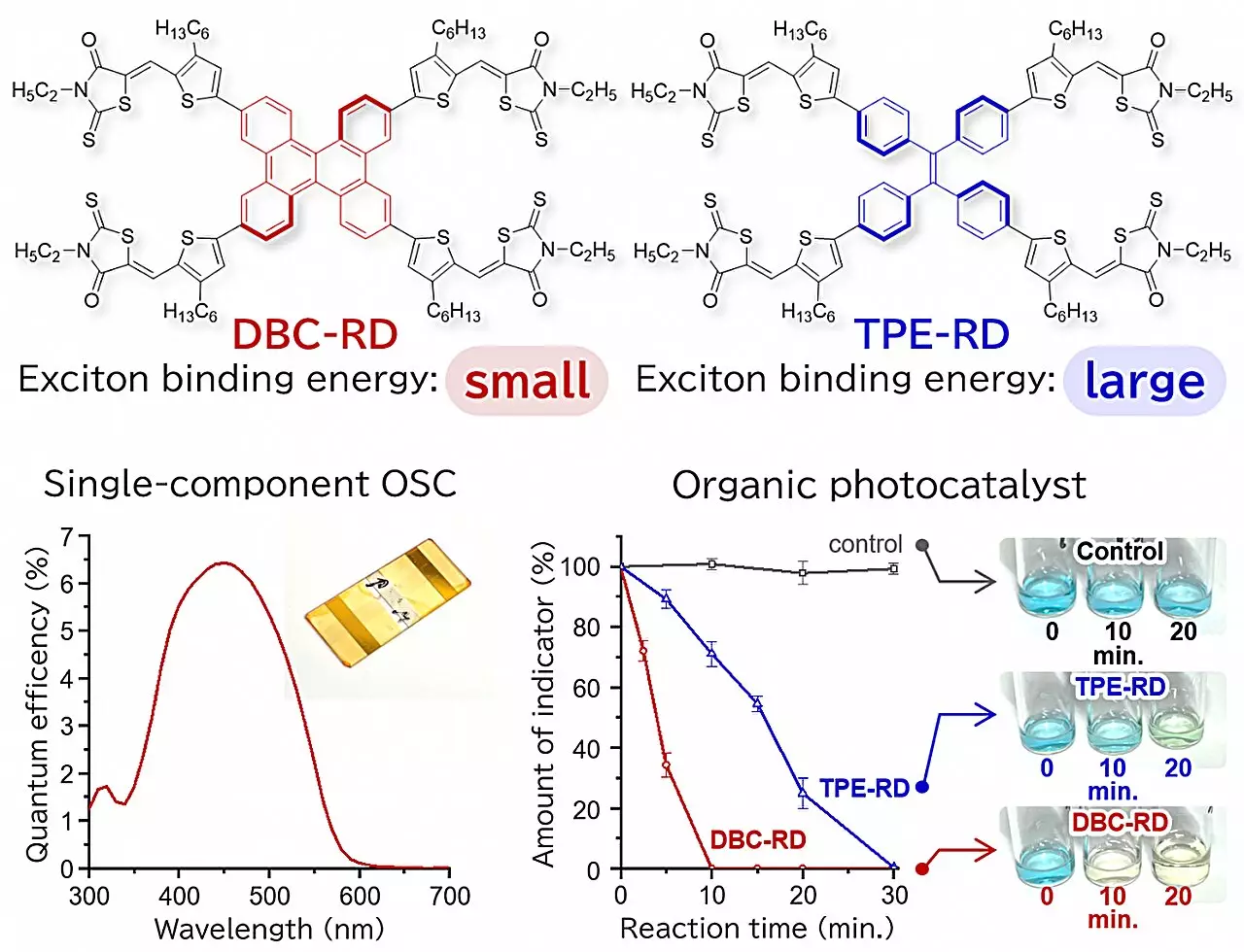As the global demand for renewable energy sources continues to rise, harnessing solar power has emerged as a pivotal strategy for achieving a sustainable energy future. At the forefront of this innovation are optoelectronic devices, particularly solar cells, which uniquely convert sunlight into usable electricity. Recent advancements by researchers at Osaka University have shed light on an innovative approach to enhance the efficiency of these solar cells by manipulating the structural characteristics of the light-absorbing molecules involved.
The effectiveness of organic solar cells is closely tied to the performance of organic molecules that absorb light and facilitate the generation of electric current. A critical factor in this process is the exciton-binding energy, which represents the energy required to convert absorbed photons into free-charge carriers—essentially the carriers of electricity. Lower exciton-binding energy translates to a more efficient generation of free-charge carriers, which is a desirable attribute for any solar cell.
However, the design of molecules with low exciton-binding energy remains a challenge, particularly in their solid-state forms. The research team’s breakthrough centers around the aggregation of these molecules. It was discovered that the way molecules stack together—whether rigidly or flexibly—can significantly influence their exciton-binding energy.
Insights from Molecular Experimentation
In their study, the Osaka University team synthesized two variants of star-shaped molecules. One was designed with a regular, flexible core, while the other featured a rigid structure. Observations revealed that while both types of molecules exhibited similar behaviors when dispersed in liquid form, they demonstrated vastly different characteristics when arranged in solid thin films. The rigid molecules aligned neatly, resembling stacked plates, leading to a remarkable reduction in exciton-binding energy compared to their flexible counterparts.
This key distinction in molecular stacking behavior illustrates the importance of structure in the marine of organic solar cell technology. To test their hypothesis, the researchers constructed practical applications of their findings by creating both a single-component organic solar cell and a corresponding photocatalyst using the different molecule types. The results were telling; the rigid molecule-based devices exhibited superior performance, creating a higher yield of free-charge carriers than the flexible ones.
These groundbreaking findings carry significant implications for the future of solar cell technology and organic optoelectronics as a whole. By demonstrating that enhanced molecular aggregation can effectively decrease exciton-binding energy, the Osaka University team has opened new avenues for designing next-generation optoelectronic devices. As manufacturers work to adopt these concepts, the potential for more efficient, lightweight, and flexible solar cells looks promising, ultimately contributing toward a cleaner and greener energy landscape.
The impact of this research extends beyond mere theoretical understanding and into practical applications and design methodologies. With further exploration and industrial integration, the insights gained could redefine how we approach and implement solar energy technologies, leading humanity one step closer to a sustainable future powered by the sun.


Leave a Reply